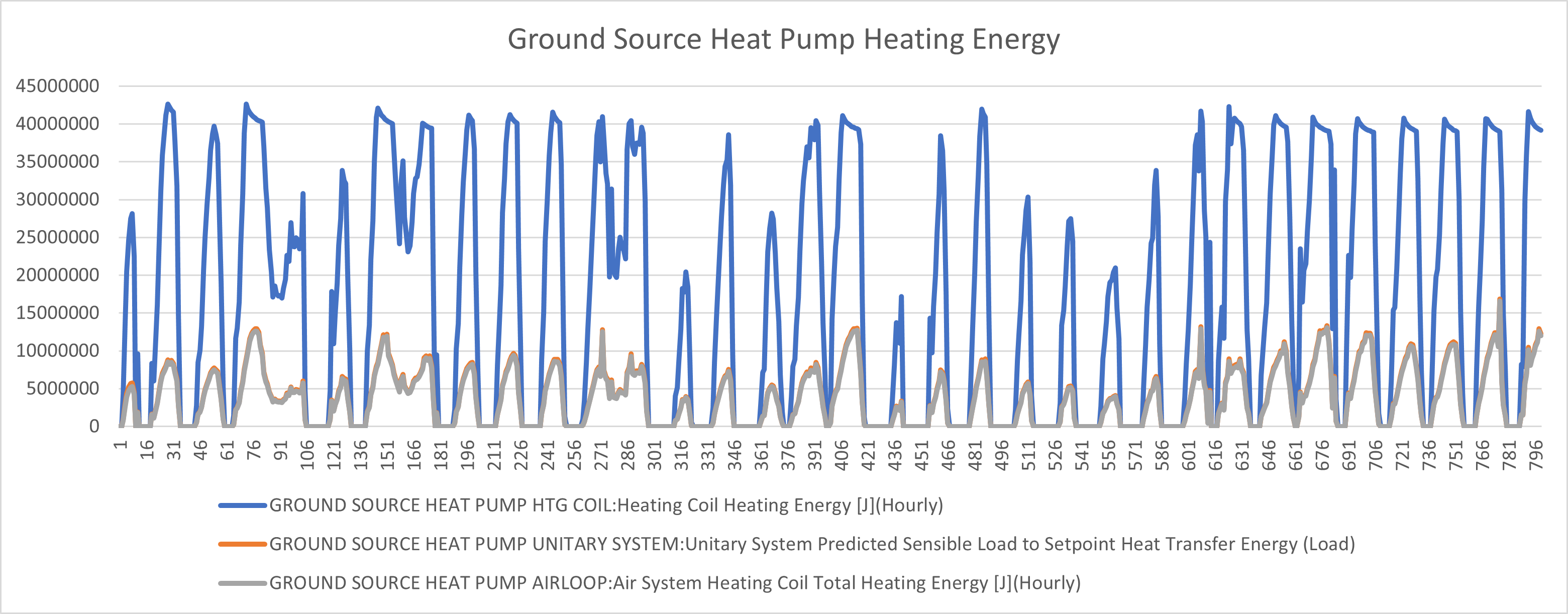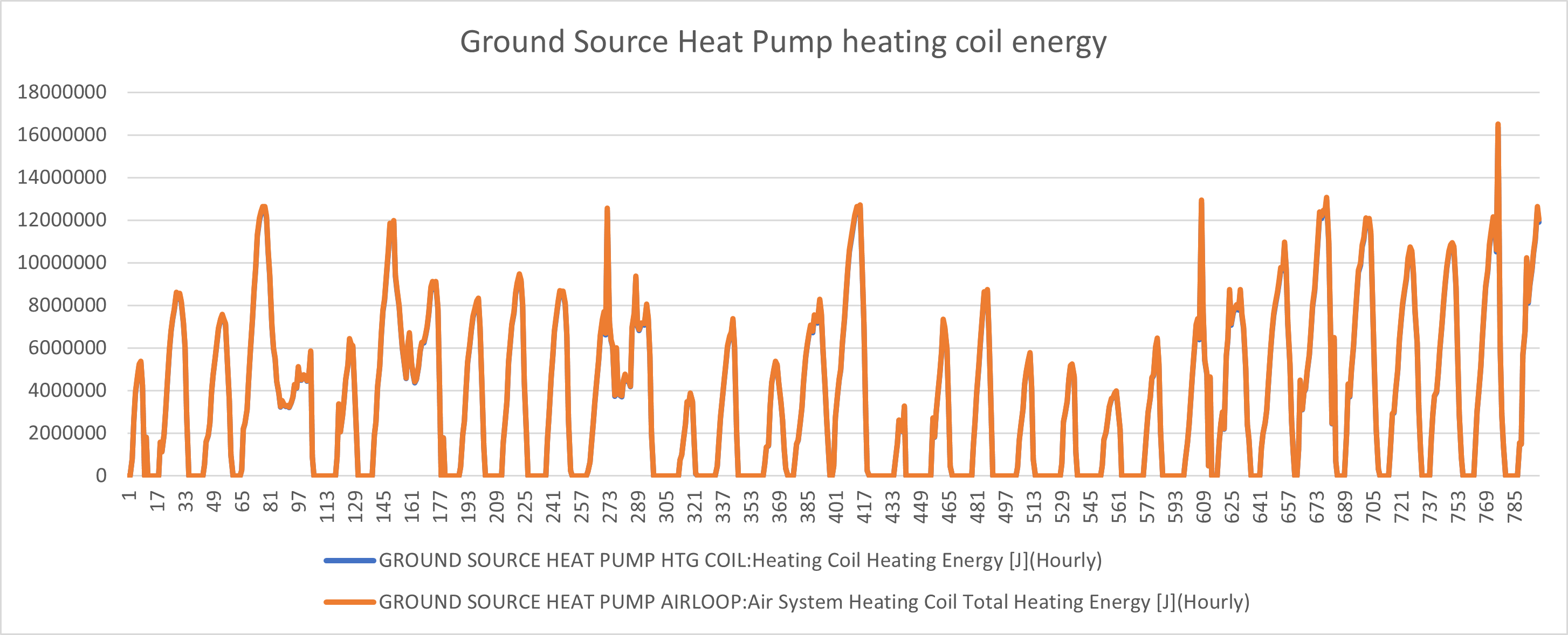GSHP heating coil energy not consistent when running at non-rated air flow rate
I am modeling a gshp system in EnergyPlus with Coil:Heating:WaterToAirHeatPump:EquationFit and Coil:Cooling:WaterToAirHeatPump:EquationFit coil objects along with a AirLoopHVAC:UnitarySystem parent object. It worked well when the actual airflow rate(specified at fan object, unitary system object, terminal object, and airloop object) is equal to coil rated airflow rate(specified at coil objects). But if the actual airflow rate is lower than coil rated airflow rate, energy report looked suspicious.
I looked at two timestep variable outputs: Heating Coil Heating Energy and Air System Heating Coil Total Heating Energy. Since the system only have two heating coils - GSHP equationfit coil and electric backup coil, the backup coil was not working in most hours and it was not providing so much heating compared to gshp coil, I would expect Heating Coil Heating Energy and Air System Heating Coil Total Heating Energy to report a similar heating energy for most of time. However, Heating Coil Heating Energy actually reports much more energy than Air System Heating Coil Total Heating Energy (and load variable Predicted Sensible Load to Setpoint Heat Transfer) almost every hour when it heats. I used a small actual airflow rate (0.1m3/s) compared to rated airflow rate(0.536m3/s) to maximize this impact:

And it looks normal if running at rated air flow rates (actual = rated = 0.536 m3/s):

The same behavior happened in cooling coils too. It looks to me that it's likely to be an EnergyPlus bug in simulating Coil:Foo:WaterToAirHeatPump:EquationFit coil part load ratio to meet loads. Or am I setting up anything in an inproper way?




